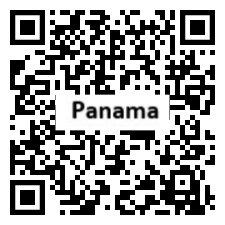Introduction
Background
Explored and settled by the Spanish in the 16th century, Panama broke with Spain in 1821 and joined a union of Colombia, Ecuador, and Venezuela - named the Republic of Gran Colombia. When the latter dissolved in 1830, Panama remained part of Colombia. With US backing, Panama seceded from Colombia in 1903 and promptly signed a treaty with the US allowing for the construction of a canal.
Geography
Area
total: 75,420 sq km
land: 74,340 sq km
water: 1,080 sq km
Climate
tropical maritime; hot, humid, cloudy; prolonged rainy season (May to January), short dry season (January to May)
Natural resources
copper, mahogany forests, shrimp, hydropower
People and Society
Population
4,404,108 (2023 est.)
Ethnic groups
Mestizo (mixed Amerindian and White) 65%, Native American 12.3% (Ngabe 7.6%, Kuna 2.4%, Embera 0.9%, Bugle 0.8%, other 0.4%, unspecified 0.2%), Black or African descent 9.2%, Mulatto 6.8%, White 6.7% (2010 est.)
Languages
Spanish (official), indigenous languages (including Ngabere (or Guaymi), Buglere, Kuna, Embera, Wounaan, Naso (or Teribe), and Bri Bri), Panamanian English Creole (similar to Jamaican English Creole; a mixture of English and Spanish with elements of Ngabere; also known as Guari Guari and Colon Creole), English, Chinese (Yue and Hakka), Arabic, French Creole, other (Yiddish, Hebrew, Korean, Japanese); note - many Panamanians are bilingual
Religions
Roman Catholic 48.6%, Evangelical 30.2%, other 4.7%, agnostic 0.2%, atheist 0.2%, none 12.3%, unspecified 3.7% (2018 est.)
Population growth rate
1.51% (2023 est.)
Government
Government type
presidential republic
Capital
name: Panama City
Executive branch
chief of state: President Laurentino "Nito" CORTIZO Cohen (since 1 July 2019); Vice President Jose Gabriel CARRIZO Jaen (since 1 July 2019); note - the president is both chief of state and head of government
head of government: President Laurentino "Nito" CORTIZO Cohen (since 1 July 2019); Vice President Jose Gabriel CARRIZO Jaen (since 1 July 2019)
Legislative branch
description: unicameral National Assembly or Asamblea Nacional (71 seats; 45 members directly elected in multi-seat constituencies - populous towns and cities - by open list proportional representation vote and 26 directly elected in single-seat constituencies - outlying rural districts - by simple majority vote; members serve 5-year terms)
Economy
Economic overview
upper middle-income Central American economy; increasing Chinese trade; US dollar user; canal expansion fueling broader infrastructure investment; services sector dominates economy; historic money-laundering and illegal drug hub
Real GDP (purchasing power parity)
$126.352 billion (2021 est.)
$109.551 billion (2020 est.)
$133.509 billion (2019 est.)
Real GDP per capita
$29,000 (2021 est.)
$25,500 (2020 est.)
$31,500 (2019 est.)
Agricultural products
sugar cane, bananas, rice, poultry, milk, plantains, pineapples, maize, beef, pork
Industries
construction, brewing, cement and other construction materials, sugar milling
Remittances
0.89% of GDP (2021 est.)
0.84% of GDP (2020 est.)
0.87% of GDP (2019 est.)
Exports
$27.237 billion (2021 est.)
$20.179 billion (2020 est.)
$28.622 billion (2019 est.)
Exports - partners
Ecuador 20%, Guatemala 14%, China 8%, United States 6%, Netherlands 6% (2019)
Exports - commodities
refined petroleum, copper, bananas, ships, coal tar oil, packaged medicines (2019)
Imports
$24.627 billion (2021 est.)
$17.502 billion (2020 est.)
$27.599 billion (2019 est.)
Imports - partners
China 21%, United States 19%, Japan 16%, Colombia 6%, Ecuador 5% (2019)
Imports - commodities
ships, refined petroleum, crude petroleum, tanker ships, packaged medicines (2019)
Exchange rates
balboas (PAB) per US dollar -
Exchange rates:
1 (2021 est.)
1 (2020 est.)
1 (2019 est.)
1 (2018 est.)
1 (2017 est.)
Page last updated: Wednesday, December 06, 2023
